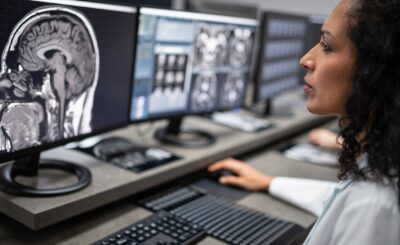Choosing the right EEG-ECG monitoring device is crucial for healthcare professionals and researchers seeking accurate and reliable data in the field of neurophysiology. With various options available such as Seer Medical, it is essential to consider key factors that can impact the quality of recordings and overall usability. In this article, we will provide a comprehensive guide on how to find the best EEG-ECG monitoring device.
1. Accuracy and Signal Quality
When searching for an EEG-ECG monitoring device, accuracy and signal quality are paramount. Look for devices that are known for their high signal fidelity, low noise levels, and minimal artifacts. Consider the device’s ability to capture clear and reliable EEG and ECG signals, as this directly impacts the accuracy and interpretation of the recorded data.
2. Ease of Use and User Interface
The best EEG-ECG monitoring devices offer an intuitive user interface and are easy to operate. Look for devices that have a user-friendly design, clear instructions, and well-organized menus. Consider features such as touchscreen displays, intuitive navigation, and easily accessible controls. A device that is easy to use and navigate ensures efficient workflow and minimizes the chances of user errors during data acquisition.
3. Portability and Mobility
Consider the portability and mobility of the EEG-ECG monitoring device, particularly if you require flexibility in data acquisition. Look for devices that are lightweight, compact, and easy to transport. Portability allows for convenient use in various clinical or research settings, including ambulatory monitoring or remote data collection. Additionally, consider the device’s power source, battery life, and compatibility with mobile devices, as these factors contribute to the device’s overall portability.
4. Data Storage and Connectivity
Assess the data storage and connectivity options offered by the EEG-ECG monitoring device. Look for devices that provide ample storage capacity for recordings and offer secure data transfer to external storage devices or cloud-based platforms. Consider the compatibility of the device with various data analysis software or platforms, as this ensures seamless integration and data management.
5. Customizability and Expandability
Choose an EEG-ECG monitoring device that offers customizability and expandability options to suit your specific research or clinical needs. Look for devices that allow for different electrode configurations, adjustable sampling rates, and flexible channel settings. Consider the availability of additional accessories or modules that can expand the device’s capabilities, such as wireless connectivity, event markers, or synchronization with other physiological data sources.
6. Support and Training
Consider the level of support and training provided by the manufacturer or distributor of the EEG-ECG monitoring device. Look for companies that offer comprehensive technical support, including troubleshooting assistance and software updates. Consider the availability of training materials, user manuals, and online resources to help you maximize the device’s functionality and optimize data acquisition.
Finding the best EEG-ECG monitoring device requires careful consideration of factors such as accuracy and signal quality, ease of use, portability, data storage and connectivity, customizability, and support and training options. By prioritizing these factors, healthcare professionals and researchers can choose a device that meets their specific requirements, facilitating accurate and reliable EEG-ECG monitoring for neurophysiological investigations.








